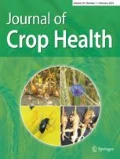Zusammenfassung
Eine Voraussetzung für die Verhinderung der weiteren Ausbreitung des invasiven Neophyten Beifußblättrige Ambrosie (Ambrosia artemisiifolia L.) aus Nordamerika ist ein effektives Monitoring zum Auffinden von Nestern und Einzelpflanzen in den entsprechenden Naturräumen. Berührungslos arbeitende Kamerasensoren an landwirtschaftlichen, kommunalen und Luft-Fahrzeugen sind ein geeignetes Mittel, um große Landschaftsareale zu untersuchen. Die Vielzahl der dabei anfallenden Bilder muss mit geeigneten Bildverarbeitungsmethoden zeitnah, idealerweise in Echtzeit (real time, online) ausgewertet werden.
In landwirtschaftlich genutzten Flächen ist es günstig, ein Monitoring mit den ohnehin anfallenden Feldarbeiten zu verbinden. Sich ändernde Aufnahmebedingungen für die Kameratechnik in Raum und Zeit sind daher die Folge. Das Erscheinungsbild der Ambrosie sowie der Begleitflora weisen spezifische Eigenschaften auf, die üblicherweise mit Hilfe von Metadaten beschrieben werden können. In der Bildverarbeitung gibt es eine Vielzahl von Methoden zur Objektklassifikation, die bei spezifischen Situationen Ihre Vor- und Nachteile haben. Eine Methode der Wahl zur Klassifikation von Ambrosie ist nach derzeitigem Kenntnisstand in naher Zukunft nicht zu erwarten.
Im Beitrag werden Beispiele für das Erscheinungsbild der Ambrosie in verschiedenen Feldern zu verschiedenen Zeitpunkten im Jahr aufgezeigt. Entsprechend schließt sich eine Bildverarbeitung an, die Ambrosiengewebe im Bild klassifiziert. Vor- und Nachteile der ausgewählten Methoden werden diskutiert. Ein Ausblick für eine „Metadaten-angepasste Bildverarbeitung – metadata adapted image analysis“ wird aufgezeigt.
Abstract
A requirement to prevent a further spreading of ragweed (Ambrosia artemisiifolia L.), a neophyte to Europe, is an effective monitoring to find single or clustered plants within the natural environment. Noncontact camera sensors attached to agricultural, municipal or aircraft vehicles are an adequate tool to survey large areas of landscape. In result a massive number of images has to be analyzed (if possible in real time) whether ambrosia tissue is present or absent in the respective image.
In agricultural fields it would be utile if the imaging is connected with field operations, which had to be done anyway. Subsequently, changing imaging conditions occur. The appearance of the ambrosia and the co-socialized plant species show specific characteristics which can be typically described by metadata. Regarding image analysis various methods exist for object classification which has situation dependent advantages and disadvantages. At the present state of knowledge in the near future an all-purpose classification method under constantly variable environment conditions will not exist.
In the paper examples for the appearance of the ambrosia plant in different agricultural fields at different times in the year are presented. According to the situation it follows up a suitable image analysis which classify tissue of the ambrosia. Advantages and disadvantages are discussed. A perspective for a metadata adapted image analysis is shown.







Literatur
Anonym (2019) IQ1. https://anthuriuminfo.com/de/4-pflanzen-apps-die-ihnen-bei-der-pflanzenpflege-und-pflanzenbestimmung-helfen/. Zugegriffen: 12.05.2019
Bohren C, Mermillod G, Delabays N (2008) Ambrosia artemisiifolia L.-Control measures and their effects on its capacity of reproduction. J Plant Dis Prot Special Issue XXI:311–316
Born W, Gebhardt O, Gmeiner J, Ruëff F (2012) Gesundheitskosten der Beifuß-Ambrosie in Deutschland. Umweltmed Forsch Prax 17:71–80
Böttger H, Langner H‑R, Ruckelshausen A (2004) Messsystem zur Bewertung des Unkrautvorkommens. Bornimer Agrartech Ber 36:49–54
Dammer K‑H, Intress J, Beuche H, Selbeck J, Dworak V (2012) Discrimination of Ambrosia artemisiifolia and Artemisia vulgaris by hyperspectral image analysis during the growing season. Weed Res 53:146–156
Dammer K‑H, Intreß J, Beuche H, Selbeck J, Dworak V (2013) Hyperspektrale Bildanalyse zur Detzektion von Beifußblättriger Ambrosie (Ambrosia artemisiifolia). In: Clasen M, Kersebaum KC, Meyer-Aurich A, Theuvsen B (Hrsg) Massendatenmanagement in der Agrar- und Ernährungswirtschaft. Köllen Druck und Verlag, Bonn, S 59–62
Gerber E, Schaffner U, Gassmann A, Hinz HL, Seier M, Müller-Schärer M (2011) Prospects for biological control of Ambrosia artemisiifolia in Europe: learning from the past. Weed Res 51:559–573
Goëau H, Bonnet P, Joly A et al (2013) Pl@ntNet mobile app. In: Proceedings of the 21st ACM international conference on Multimedia (MM ’13). ACM, New York, S 423–424
Heberaecker P (1989) Digitale Bildverarbeitung, 3. Aufl. Hanser, München
Intreß J, Geyer M, Dammer K‑H (2015) Unterscheidung von Pflanzenarten anhand ihres Spektralpro-fils mittels einer Spektralen Datenbank am Beispiel von Beifußblättriger Ambrosie (Ambrosia artemisiifolia L.). In: Zude-Sasse M, Kraft M (Hrsg) Tagungsband. 21. Workshop Computer-Bildanalyse in der Landwirtschaft 3. Workshop Unbemannte autonom fliegende Systeme (UAS) in der Landwirtschaft. Bornimer Agrartechnische Berichte 88, S 101–112
Nawrath S, Alberternst B (2014) Aktivitäten der Bundesländer zur Verhinderung der Ausbreitung der Beifuß-Ambrosie (Ambrosia artemisiifolia) in Deutschland. Julius-Kühn-Archiv 445:47
Ren S, He K, Girshick R, Sun J (2015) Faster R‑CNN: towards real-time object detection with region proposal networks. Adv Neural Inf Process Syst 28:91–99
Schirrmann M, Ustyuzhanin A, Giebel A, Dammer K‑H (2018) Convolutional neural network for identifying common ragweed from digital images. In: Müller L, Sychev V (Hrsg) Novel methods and results of landscape research in Europe, Central Asia and Siberia (in five volumes), Bd. 3. Landscape Monitoring and Modelling. Publishing House FSBSI “Pryanishnikov Institute of Agrochemistry”, Moskau, S 201–204
Ustyuzhanin A, Dammer K‑H, Giebel A, Weltzien C, Schirrmann M (2016) Discrimination of common ragweed (Ambrosia artemisiifolia) and mugwort (Artemisia vulgaris) based on bag of visual words model. Weed Technol 31:310–319
Ustyuzhanin A, Intreß J, Schirrmann M, Chochlov N, Dammer K‑H (2015) Identifizierung von Beifußblättriger Ambrosie (Ambrosia artemisiifolia) mittels Bildverarbeitung in einem Winterroggenfeld. Gesunde Pflanzen 67:165–173
Wartenberg G, Langner H‑R, Böttger H, Schmidt H (2005) Messsystem zur Bewertung des Unkrautvorkommens. Bornimer Agrartech Ber 44:158
Yao X‑W, Wang H, Liao Z et al (2017) Quantum image processing and its application to edge Detection. Theory Exp. https://doi.org/10.1103/PhysRevX.7.031041
Author information
Authors and Affiliations
Corresponding author
Ethics declarations
Interessenkonflikt
K.-H. Dammer, J. Intreß, M. Schirrmann und A. Garz geben an, dass kein Interessenkonflikt besteht.
Rights and permissions
About this article
Cite this article
Dammer, KH., Intreß, J., Schirrmann, M. et al. Wachstumsverhalten der Beifußblättrigen Ambrosie (Ambrosia artemisiifolia L.) auf landwirtschaftlichen Nutzflächen Brandenburgs – Schlussfolgerungen für die Bildverarbeitung kameragestützter Monitoring-Strategien. Gesunde Pflanzen 71, 227–235 (2019). https://doi.org/10.1007/s10343-019-00488-0
Received:
Accepted:
Published:
Issue Date:
DOI: https://doi.org/10.1007/s10343-019-00488-0

